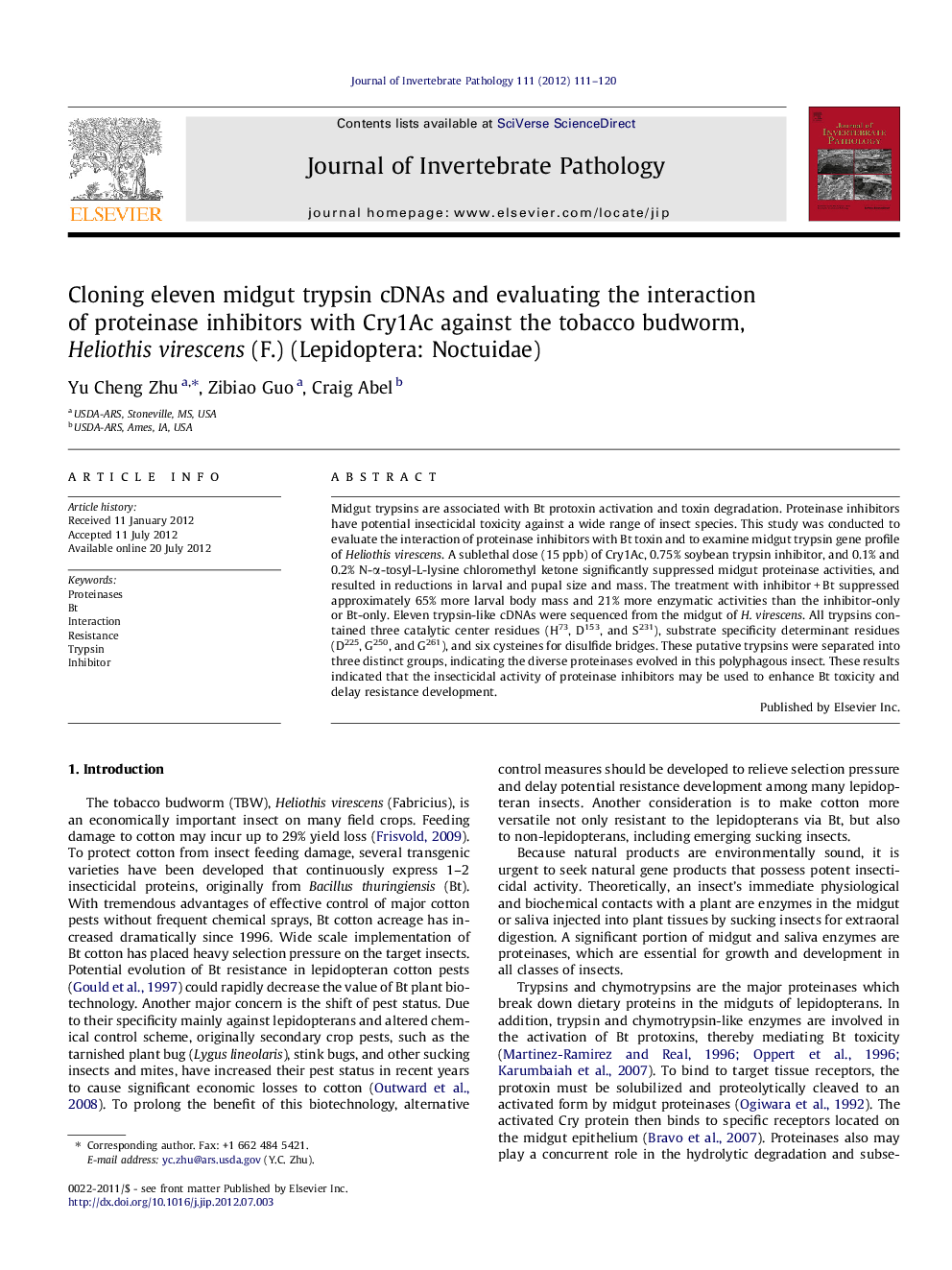| Article ID | Journal | Published Year | Pages | File Type |
|---|---|---|---|---|
| 6389724 | Journal of Invertebrate Pathology | 2012 | 10 Pages |
Midgut trypsins are associated with Bt protoxin activation and toxin degradation. Proteinase inhibitors have potential insecticidal toxicity against a wide range of insect species. This study was conducted to evaluate the interaction of proteinase inhibitors with Bt toxin and to examine midgut trypsin gene profile of Heliothis virescens. A sublethal dose (15 ppb) of Cry1Ac, 0.75% soybean trypsin inhibitor, and 0.1% and 0.2% N-α-tosyl-L-lysine chloromethyl ketone significantly suppressed midgut proteinase activities, and resulted in reductions in larval and pupal size and mass. The treatment with inhibitor + Bt suppressed approximately 65% more larval body mass and 21% more enzymatic activities than the inhibitor-only or Bt-only. Eleven trypsin-like cDNAs were sequenced from the midgut of H. virescens. All trypsins contained three catalytic center residues (H73, D153, and S231), substrate specificity determinant residues (D225, G250, and G261), and six cysteines for disulfide bridges. These putative trypsins were separated into three distinct groups, indicating the diverse proteinases evolved in this polyphagous insect. These results indicated that the insecticidal activity of proteinase inhibitors may be used to enhance Bt toxicity and delay resistance development.
Graphical abstractDownload full-size imageHighlights⺠Eleven trypsin-like cDNAs were sequenced from the midgut of H. virescens. ⺠Proteinase inhibitors significantly suppressed midgut proteinase activities. ⺠Proteinase inhibitors significantly suppressed larval and pupal body length and mass. ⺠Proteinase inhibitors synergized Bt toxicity and may delay Bt resistance development.
